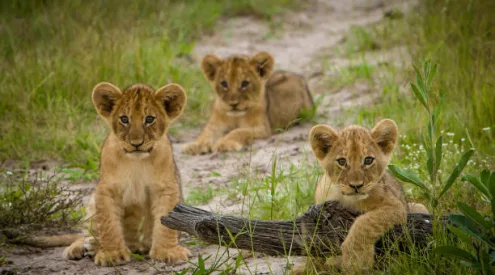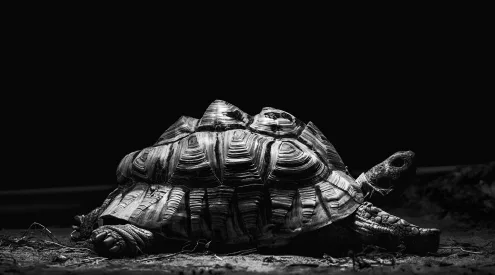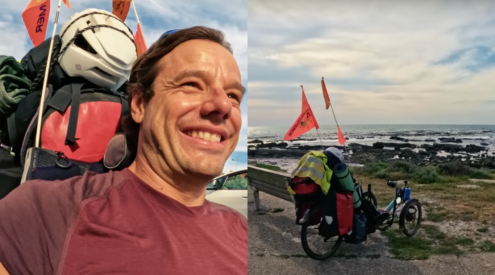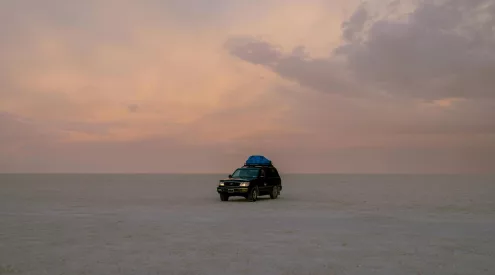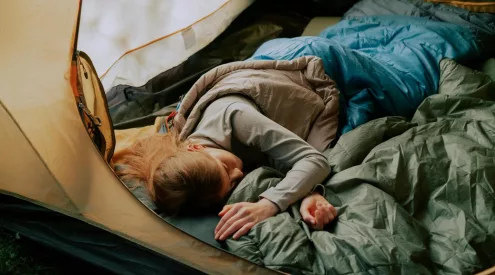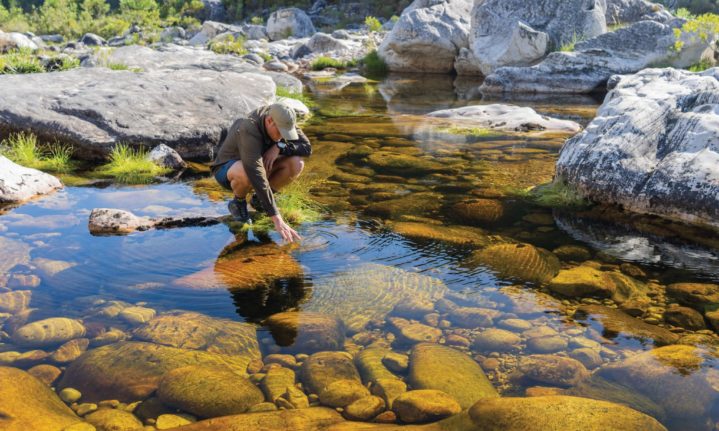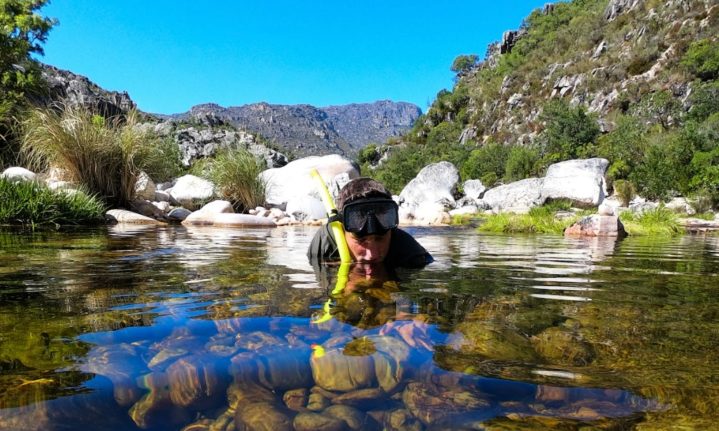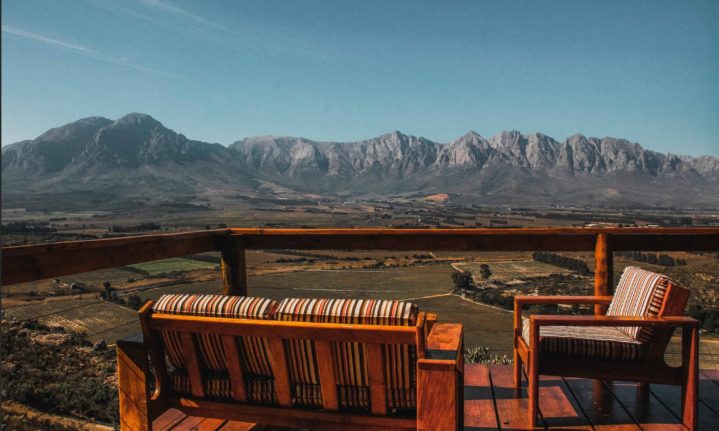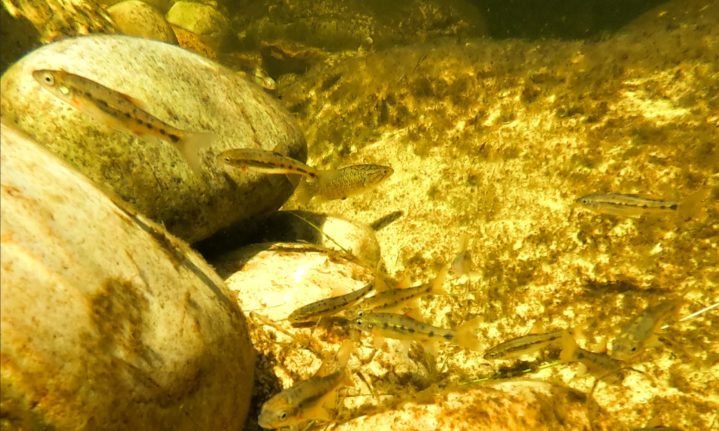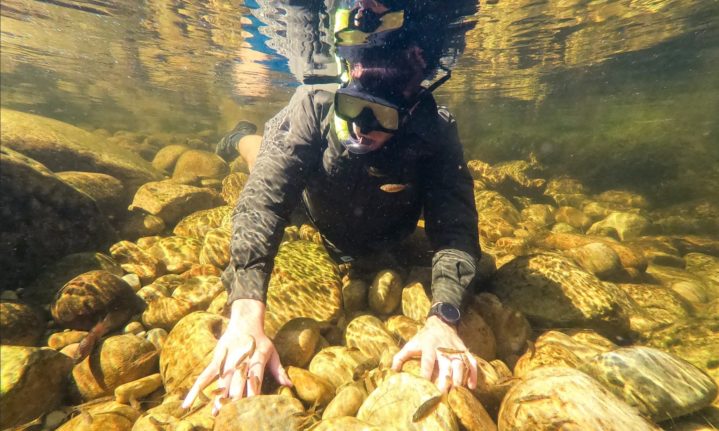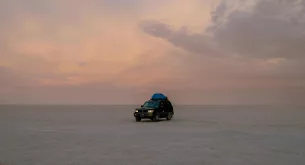Okay, maybe not Rambo. And not Chuck Norris, either. But a hike through Bainskloof on a quest for an endangered fish made Jay Caboz feel as intrepid as any big-screen action hero
For a typical Capetonian, a snorkel adventure starts with wetsuit, mask and fins – and then that awkward waddle across the beach. This sets off a series of disturbing mental visualisations of a gasping plunge into the icy Atlantic with the reward of a bone-chilling, yet sublime swim through moody kelp forests on an expedition to spy on fish and nudibranchs, maybe swim with seals and have penguins pop into the water with you. If you’re lucky, that is.
Which is why, when I was offered the opportunity to snorkel with some of the world’s rarest fish, a species only found in the Western Cape, I never expected that finding them would mean travelling 100km inland.
Such was the case when I found myself next to adventure and travel guide Nico Meyer, on a blisteringly hot summer morning at Tweede Tol campsite on the Bainskloof mountain pass. We were, I’d been told, heading deep into the heart of Limietberg Nature Reserve.
I hopped out of the car fully equipped. Hiking boots, trekking poles, and a heavy backpack laden with the GoPro, camera, tripod, sunblock and trail mix.
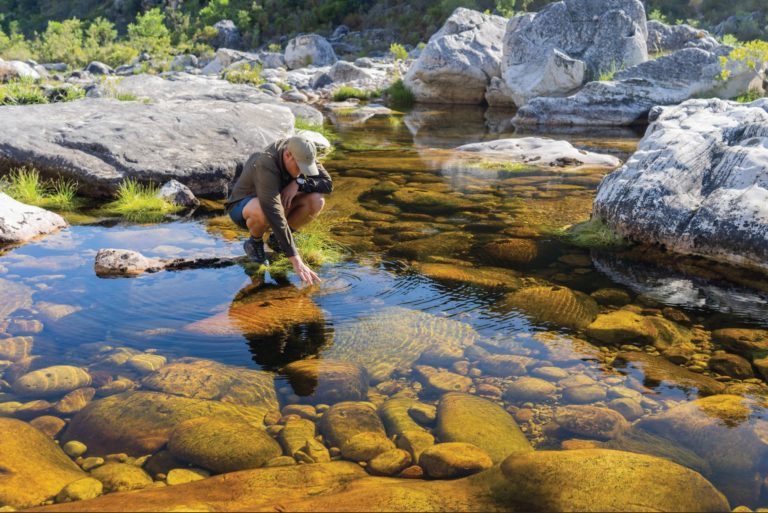
Nico’s experienced side-eye took me and my paraphernalia in. ‘We’re going straight up the river, like Rambo,’ he said. ‘I don’t think your camera gear’s going to survive; it’s highly unlikely you’ll make it to the area where they live without getting wet.’
With a decade spent working as a ranger at five-star game reserves, Nico fit the nature guide mould perfectly. Right down to the khaki shirt and pants and dry sense of humour. If you’ve seen Stallone’s Rambo flicks, you can imagine the anguish that took me by the scruff of my neck. I knew we had a 6km hike to get to the fish, but had I completely underestimated the terrain we were about to traverse?
‘Don’t worry,’ Nico said, ‘that’s why I brought the drybag.’
And off we set on what I imagined was to be a scenic hike, following a route that winds upstream. Occasionally, I imagined, we’d be crossing one of South Africa’s most pristine watercourses, the Witte River.
Our goal was to find the elusive Burchell’s redfin (Pseudobarbus burchelli), a tiny rosy fish known locally as the Breede redfin.
These redfins were once so widespread you could find them in any stream throughout the Cape Fold mountains. Sadly, their numbers have dwindled to a mere fraction of what they once were. Their population is isolated and restricted to a handful of mountain streams where their habitat remains intact and there’s an absence of invasive fish. So rare in fact are these ruddy redfins, that they are listed on the IUCN Red List as critically endangered, one badly timed fishing trip from extinction.
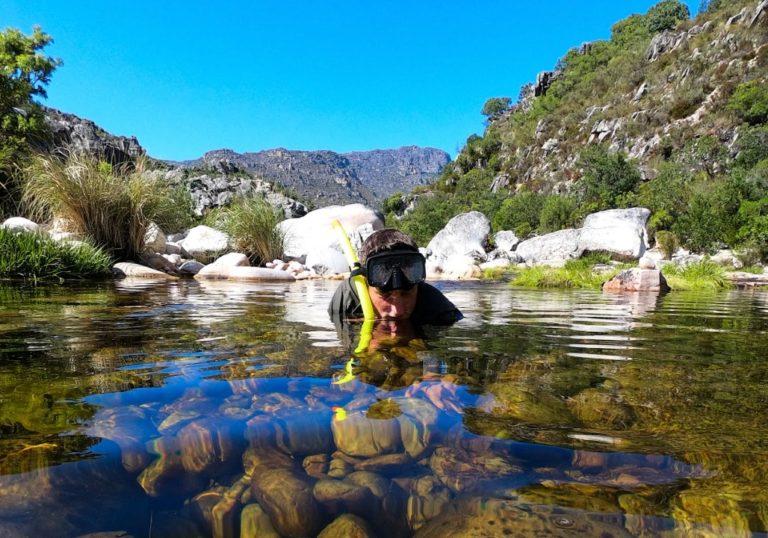
It didn’t take long for Nico’s “Rambo” foreshadowing to become reality as, just 75m from the car – under a bridge, past a picnic site – we stood on the river’s rocky shoreline, Nico grinning knowingly.
‘That’s the walking done,’ he said. ‘From here on, we swim.’
He suggested that I keep my shoes on to grapple with sharp and slippery rocks, and with that, we slipped into Rambo mode, drybag in tow, boots slip-sliding over rocks, tripod on my head.
While all this was happening, and I was trying not to fall, Nico explained how alien fish species had invaded and taken over the environment. How, as a result, there was very little life. No insects, no small fish.
Almost a century ago, he said, species such as bass and trout were introduced into Western Cape river streams. With no natural predators they quickly adapted to their new environment, causing the decimation of populations of smaller indigenous freshwater fish such as the redfin. In certain cases, as in the Eerste River, this caused the complete local extinction of redfins.
After about 25 minutes of Ramboing, we reached “The Wall”, a section of bedrock too high for invasive fish species to jump over. Beyond this, Nico said, we would find Breede redfin.
We set up a basecamp on a large flat section of rock overlooking a deep pool of water that leaned against a granite cliff face. It was brutally exposed to the sun. But, immediately, there was a noticeable difference in the water quality. There was a striking difference, too, in the life around us. Insects floated on the surface of the pools and watergrass swayed in the ripples.
As we donned our masks, Nico explained that redfins are quite shy. The trick to finding, he said, was to snorkel slowly and make efforts not to disturb the algae.
At the pool’s edge, we plunged in. Compared to the Atlantic, the water was pleasantly warm. Snorkel-breathing with my head submerged gave me that sense of having entered a different world. We inched our way around the pool, looking in cracks and crevices to see what we could find.
Not as elusive as I’d imagined, it wasn’t too long before we saw them – a group of about 15 redfin, shimmering in a shoal of energy. Each was about the length of a finger, their scales reflecting beams of sunlight filtering through the surface as they flashed their distinctive bright red fins.
We remained semi-submerged, faces in the water, lost in this otherworld, trying not to move, hands extended, holding on to the rocky bed to keep ourselves under water.
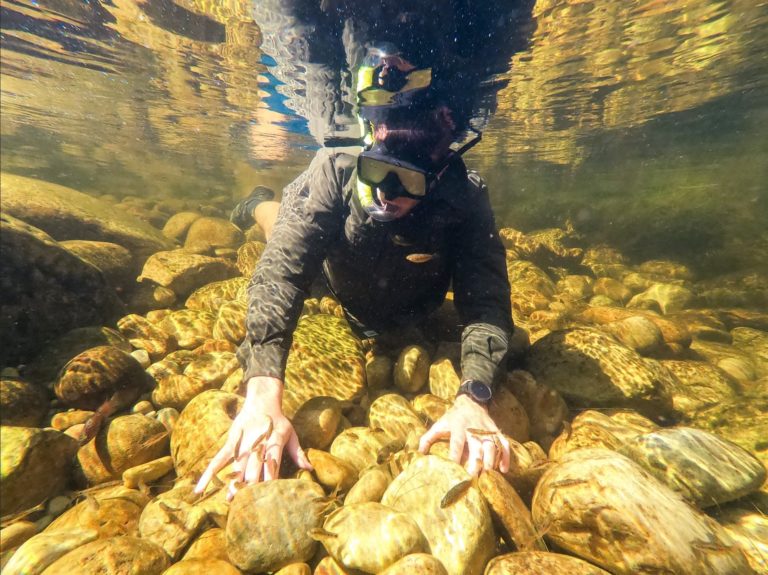
It was a magical experience as dozens of redfins and Cape kurper (Sandelia capensis) came closer. They swam through, between and around our hands and in front of our masks, almost urging us to stay just a little longer.
What struck me in those moments was a powerful sense of impermanence, knowing that these rare creatures might at any moment no longer exist at all. Here I was in an enchanted alien world, communing with something alive and vital and at the very brink of extinction. For a brief while, everything else stopped mattering and that underwater bubble became my entire universe.
‘It’s the silence,’ said Nico, when we finally emerged from the water. ‘That’s what gets me. When you dip your head below water, it’s like you’re in a different world. It’s so quiet and peaceful. And the longer you stay that way, the closer the redfins come to you.’
It was satisfying to have spent cherished time with these underhyped, unheralded endangered creatures, but it was great to feel the hot sun on my shivering body. The pool might not be as icy as the Atlantic, but I doubt even Stallone would last too long in that pure mountain run-off.
Soon, what had been a gentle breeze when we arrived was picking up, the wind now chopping the water’s surface, disturbing the pool’s serenity. It was time to pack up.
As we navigated back through the winding river, our shoes soaked, our necks sunburnt, I wondered if these fish would still be here by the time my own children were old enough to watch Rambo reruns with me.
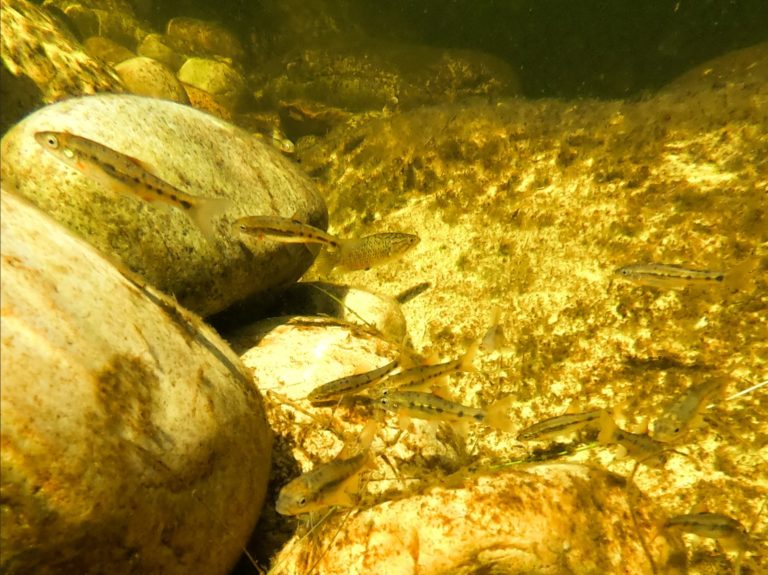
The facts
In 2019, the South African National Biodiversity Institute found that a third of South Africa’s freshwater fish species are threatened with extinction.
At present, 20 Western Cape endemic species are considered “vulnerable”, “endangered” or “critically endangered” by the International Union for Conservation of Nature (IUCN). The Breede redfin is considered to be critically endangered, one step away from extinction.
Half of South Africa’s freshwater fish species are endemic (found nowhere else on Earth).
According to the World Wildlife Fund’s World’s Forgotten Fishes report released last year, freshwater biodiversity is declining at twice the rate of that in the oceans or forests. A third of freshwater fish species globally are threatened with extinction. Populations of migratory freshwater fish have plunged by 76% since 1970, and megafish by a staggering 94%.
*You can contribute towards fish and redfin conservation projects by donating to the Freshwater Research Centre. frcsa.org.za
DO IT
To follow in Rambo’s footsteps, you’ll need a day pass from Cape Nature, and go prepared with eco-friendly sunscreen, hat, mask and snorkel, water waders (or boots you don’t mind getting wet), and come prepared to get wet on the way there, too.
Alternatively, book a trip with Nico Meyer’s WILDcape, a Paarl-based tour company aiming to connect travellers with their environment and hopefully instil a deeper appreciation of the natural world. Nico conducts tours all over the Western Cape – from disa hunting on Table Mountain to multiday Whale Trail hikes. 083 263 8206 wildcapesa.co.za
Not keen to follow in Rambo’s footsteps?
Chill out at one of the Tweede Tol picnic sites while your friends Rambo it up the river. Permits are R50 per adult, R30 per child (free for Wild Card holders). Only 120 visitors are permitted per day. Gates are open from 8am to 6pm. capenature.co.za
Sleep over
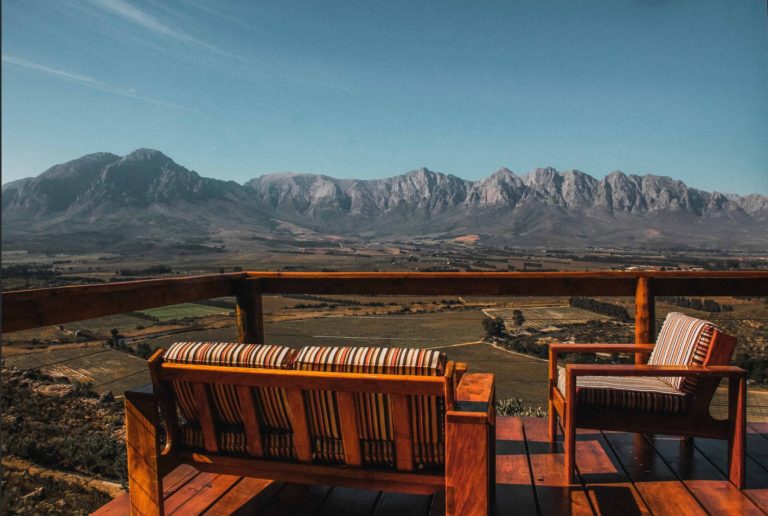
Stonewood Mountain Cabin
On the Bree River, this wooden cabin offers a laid back rusticity retreat for up to six people. From R2 100 pn on weekdays. stonewoodmountaincabin.com
Arum Lily Cottage and Log Cabin
A 30-minute drive from Bainskloof and located on the edge of a dam, these two family-sized home-from-home options are great if you need to rest up after your Rambo mission. From R1 600 pp pn. arumlilycottage.co.za
AfriCamps at Doolhof
In Wellington’s picturesque backcountry, you can glamp at Doolhof Wine Estate, where mountain biking, wine tasting and spa treatments are on offer. From R1 940 for two, although tents accommodate five people. africamps.com
Redfin titbits
The Breede redfin grows to about 120mm, about the length of your index finger. As their name suggests, they can be identified by their distinctive red fins.
The fry and juveniles form large shoals, whereas adults occur in small groups.They are bottom to midwater feeders. They prey on anything from tiny invertebrates to bugs, larvae, as well as zooplankton and algae.
The ideal season to swim with the Breede redfin is summer, when the weather is warm and – in preparation for breeding season – their colouring is at its most striking, the males putting on their best show to attract females.
This article originally appeared in the print issue of Getaway in June 2022
Words and images by Jay Caboz
Follow us on social media for more travel news, inspiration, and guides. You can also tag us to be featured.
TikTok | Instagram | Facebook | Twitter
ALSO READ: 10 enchanting mountain cabins in the Western Cape for a peaceful retreat

